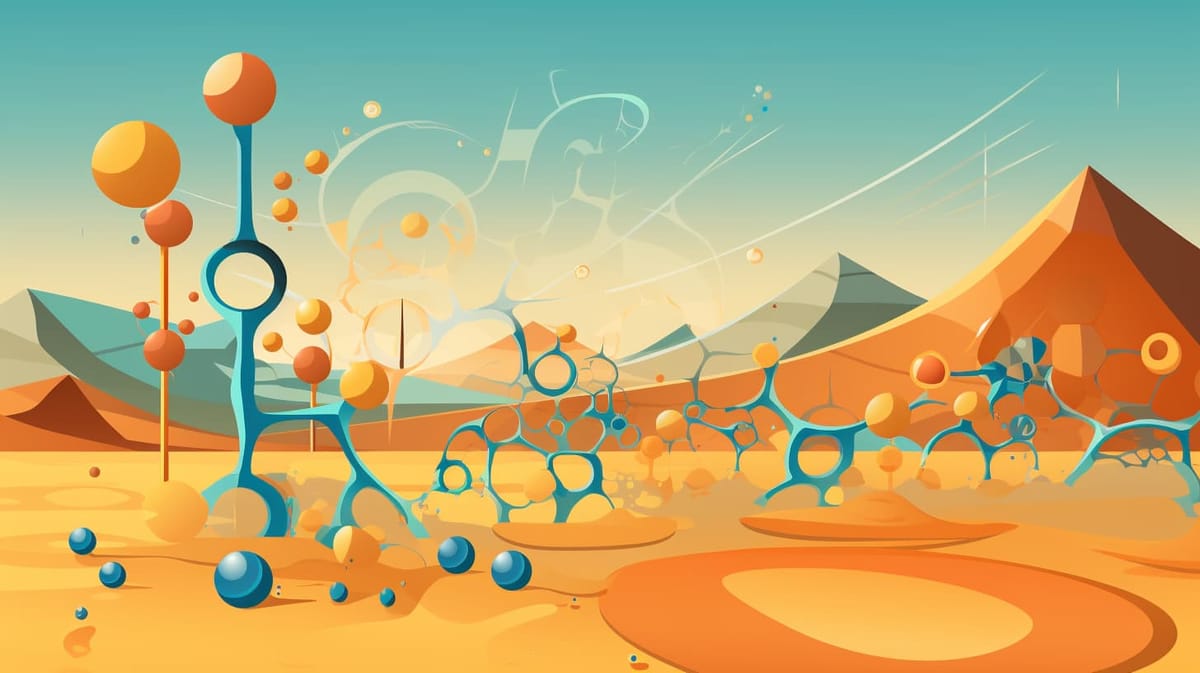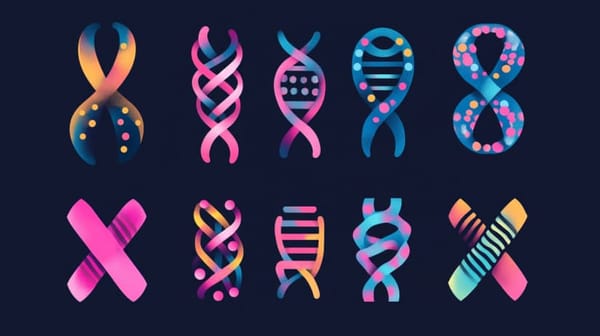Glycine is a straightforward yet vital amino acid that significantly contributes to various bodily functions. It's labeled as non-essential since our bodies naturally produce it, but its role is crucial in our overall health. Glycine is a fundamental element of proteins and is especially important in forming collagen, the most prevalent protein in our bodies, which is crucial for maintaining strong and healthy skin, bones, and connective tissues. Beyond structural roles, glycine acts as an inhibitory neurotransmitter in the brain, promoting relaxation and mental focus, and aids in sleep regulation. It's also instrumental in producing glutathione, a powerful antioxidant that defends our cells against damage from free radicals. It's also very important in the macroautophagy process! Glycine's extensive involvement in these critical processes makes it an indispensable nutrient for sustaining health and vitality.
Glycine as an osmolyte
One of the most powerful correlations to dry fasting and glycine is its role as an osmolyte. Read more about osmolytes here and I have a few articles as well. TLDR: We need it to keep our cells in top shape during dehydration.

What is the connection of glycine to autophagy?
Glycine, a non-essential amino acid, has been studied for its various roles in the body, including its involvement in the process of autophagy, the body's way of cleaning out damaged cells and cell components to make way for new, healthier ones. Here’s how glycine is connected to autophagy:
- Enhancement of Autophagy: Research suggests that glycine can enhance the autophagic process. Glycine is believed to activate certain pathways or signals that lead to increased autophagy. For instance, it may influence the mTOR (mechanistic target of rapamycin) pathway, which is a crucial regulator of autophagy.
- Protection During Autophagy: Glycine also plays a protective role for cells during autophagy. It can help maintain the integrity of cells as they go through this rigorous cleaning process, ensuring that the cells' essential structures are preserved while the unnecessary or damaged parts are recycled.
- Contribution to Glutathione Production: Glycine is a key component in the synthesis of glutathione, a potent antioxidant in the body. While not directly involved in autophagy, glutathione helps protect cells from oxidative stress, which can indirectly support the autophagic process by maintaining cellular health and stability.
- Starvation and Autophagy: Autophagy is often triggered by cellular stress, including nutrient deprivation or starvation. Glycine is known to mimic the effects of dietary restriction without actually reducing calorie intake, potentially stimulating autophagy through pathways similar to those activated during nutrient deprivation.

The Atg8/LC3 system is the second key process involved in the growth of the phagophore, a structure involved in autophagy. Here’s how this system works in more understandable terms:
- Atg8 Processing: The process begins when the protein Atg8 is modified by the enzyme Atg4, which cuts it in a way that exposes a glycine (a type of amino acid) at one end of Atg8.
- Activation and Transfer: The enzyme Atg7, acting similarly to an E1 enzyme, activates the modified Atg8. It then hands off Atg8 to another enzyme called Atg3, which functions like an E2 enzyme.
- Attachment to PE: The glycine end of Atg8 is then attached to a lipid called phosphatidylethanolamine (PE). This attachment process is assisted by the conjugate of Atg12 and Atg5, which might work like an E3 enzyme to help this attachment happen.
- Membrane Association and Release: Once attached to PE, the Atg8 (now known as Atg8-PE) associates with membranes. However, it can be removed, or released from these membranes, by a second cut made by Atg4.
- Importance of Deconjugation: The removal of Atg8-PE from membranes, called deconjugation, is regulated in a way that's not fully understood. However, it's known to be crucial for autophagy. If this step doesn’t occur properly, it can lead to issues in the autophagy process.
In simpler terms, this system is all about preparing Atg8, attaching it to a lipid so it can associate with membranes, and then making sure it can be removed properly. Each step is crucial for the autophagy process to function correctly.
Potential problems associated with low glycine
- Impaired Synthesis of Collagen: Glycine is a key component of collagen, a protein crucial for healthy skin, tendons, ligaments, and bones. Insufficient glycine can lead to weakened connective tissues, resulting in skin problems, joint disorders, and poor wound healing.
- Reduced Muscle Strength: Glycine plays a role in muscle synthesis and repair. A lack of glycine can hinder muscle growth and repair, potentially leading to muscle weakness and fatigue.
- Compromised Immune Function: Glycine is involved in the production of glutathione, a major antioxidant. A deficiency may weaken the immune system, making the body more susceptible to infections and diseases.
- Digestive Issues: Glycine contributes to the production of bile acids, which are necessary for fat digestion. Inadequate levels can lead to digestive problems and impaired nutrient absorption.
- Poor Sleep Quality: Glycine has a calming effect on the brain and can help regulate sleep patterns. Low levels of glycine can lead to difficulties falling asleep or staying asleep.
- Cognitive Impairment: Glycine functions as an inhibitory neurotransmitter in the central nervous system. A deficiency can affect cognitive functions, leading to issues like poor memory, reduced attention span, and impaired learning.
- Increased Risk of Metabolic Disorders: Glycine is involved in regulating blood sugar levels and lipid metabolism. Insufficient glycine may contribute to the development of metabolic disorders like diabetes and high cholesterol.
- Mental Health Issues: Glycine has a modulatory effect on the neurotransmitter systems in the brain, including those involved in mood regulation. A deficiency can potentially lead to mood disorders, such as depression and anxiety.
- Increased Oxidative Stress: With glycine being a precursor for glutathione, low levels can reduce the body's ability to combat oxidative stress, leading to cellular damage and accelerated aging.
- Impaired Detoxification: Glycine plays a role in the body's detoxification processes. A deficiency can hinder the elimination of harmful substances from the body, potentially leading to toxin buildup and adverse health effects.
Glycine and diet when thinking about supplementing for dry fasting protocols
Meat-eaters may have higher glycine requirements, despite not typically consuming collagen-rich parts of the animal. This is linked to the balance of amino acids in their diet, particularly the ratio of methionine to glycine. Methionine is another amino acid found abundantly in muscle meats.
- Methionine and Glycine Balance: High methionine intake, common in diets rich in muscle meats, can increase the body's demand for glycine. Glycine is used to help detoxify the excess methionine and convert it into other useful products in the body. Without enough glycine, the process of metabolizing methionine can lead to an accumulation of homocysteine (BAD), a substance linked to cardiovascular diseases and other health issues.
- Glycine Requirements in Meat Eaters: Although meat-eaters consume protein-rich diets, the specific parts of the animal they consume (mainly muscle meat) are high in methionine but relatively low in glycine. This can create an imbalance. Historically, humans consumed more of the whole animal, including the bones, skin, and connective tissues, which are rich in glycine. Modern diets, however, often lack these components, potentially leading to a relative glycine deficiency.
- Plant-Based Diets and Glycine: Plant-based diets naturally have a lower methionine content. Hence, the relative demand for glycine to balance methionine is not as pronounced as in meat-based diets. While plant-based diets might offer less glycine than a nose-to-tail meat-based diet, the lower methionine intake balances the lower glycine intake, reducing the need for additional glycine supplementation.
Don't forget cofactors for Glycine and collagen
For optimal collagen synthesis, glycine works alongside several crucial cofactors. The most important ones include:
- Proline: Another amino acid, proline is essential for the stability of the collagen triple helix structure.
- Vitamin C: Vital for the hydroxylation of proline and lysine during collagen synthesis. This process is necessary for stabilizing and cross-linking collagen fibers.
- Copper: Plays a role in linking collagen and elastin fibers together, providing tissue strength and elasticity.
- Zinc: Important for the synthesis and stabilization of collagen. Zinc acts as a cofactor for the enzyme lysyl oxidase, which is involved in the cross-linking of collagen and elastin fibers.
For Vitamin C you'll need plant-based or supplementation.
Got any ideas and comments about this: Check out the post on the dry fasting club forums and comment or make your own thread!





